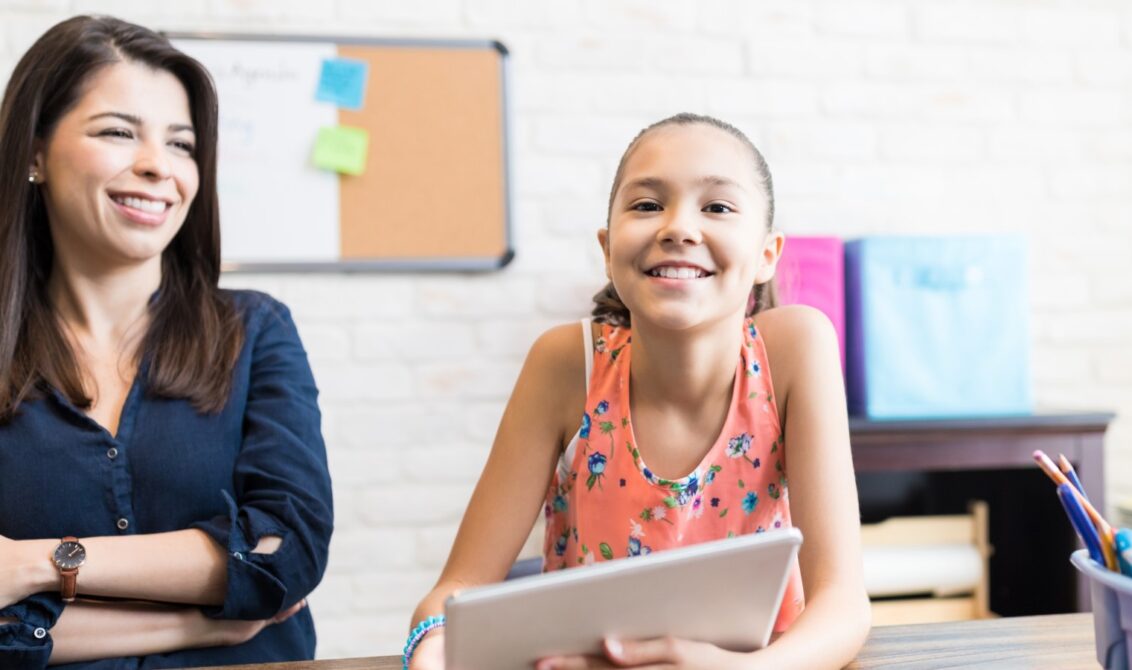
Kate Edwards, Pearson’s Chief Learning Officer, shares her top tips, techniques, and advice for making the most of online learning.
There are so many unanswered questions for families right now. On top of the usual parental concerns, we’re now having to face the reality that our children might be doing some (or all) of their learning from home, often, in front of a screen.
Like most parents I wonder what impact this might have on my daughter. Will it impact her development? I wonder what this might mean for her social skills? What about her future opportunities? I will also admit to worrying that all of this time in isolation might be making her go a little bit wild and feral? But mostly, I think how best can I support her while still maintaining my own sanity?
These, and many more questions, are what so many of us are struggling with right now.
If you are keeping up with the real time changes in the UK, there is a growing likelihood that online learning will become our reality again in the near future. If you are elsewhere in the world, you might not have left the first phase of the rush to online. Reflecting this, I want to help parents prepare and cope effectively. As both a parent and as Pearson’s Chief Learning Officer, I’ve written these tips with both my heart and my head. Everything I’m sharing is based on research, but most importantly – I hope these insights will help make any future online learning experience a bit more manageable.
Convey calm
Most importantly, encourage your child to talk to you about what they are feeling and respond with empathy and understanding. It’s an uncertain, and often frightening time right now; we need to show our children that we’re here for them. Children are receptive to learning when they feel safe and secure.
Make a plan that helps achieve outcomes
In the world of learning, “outcomes” is a word used quite often; it refers to the learning goals that students are meant to achieve. Whether learning takes place online or face to face, it’s all about students achieving the outcomes that will set them up for success. The outcome might be to understand a topic, develop a skill, or for students to socially develop and connect with peers. Get clear on what these outcomes are for your child, based on what they want to learn, what their teacher’s goals are, and how you as a parent can support. If your child’s learning moves online, make sure you know:
- What are your child’s learning goals (AKA outcomes)?
- What other outcomes should your child be focused on, such as improving their critical thinking skills or ability to collaborate with others?
- What are the expectations of you, as a parent, for helping your child make progress towards these outcomes?
I know many parents have decided to supplement what their school provides through additional online learning experiences. It’s important to keep outcomes in mind if you select learning technology for your child; identify the outcome your child needs to achieve and make sure there is evidence that the product you choose has a positive impact on the outcome you’ve identified.
Create routine
Students usually work best within routines. Work with your child to set the expectations for completing schoolwork and attending classes.
- Ensure you know the expectations that the teacher has for completing their schoolwork from home and how teachers can be reached. Preview lessons, assignments, and don’t miss any live lessons.
- Prepare a schedule of what needs to be completed each day/week. Part of effective scheduling is building breaks into the day and not trying to put too much learning into one block. A general rule of thumb is 30 to 50 minutes of learning and then a break for older students. Learning should take place in smaller chunks for younger pupils.
- If you are working from home, make sure your child knows when you are available and unavailable to help them. Setting clear boundaries is essential for your sanity and for your child’s self-esteem.
- Embrace the fact that online learning does not mean your child only learns in front of a computer. Given educators have to focus on achieving a variety of outcomes, you should expect that activities will adjust based on the best way to achieve each outcome. Activities might range from being given several links to follow at the student’s own pace, being asked to do some practice work, or completing independent work offline.
- Review and reflect on the day by asking your child to show you what they worked on and ask them a few questions about what they learned. This isn’t you ‘checking’ their work; it’s you being curious about what they’ve done.
Help your child believe they can do it
Everyone is going to experience setbacks and frustrations. It’s key to try and see those moments as useful markers on a journey towards learning, rather than signs that it is time to give up. If students struggle with an assignment use statements such as:
- Tell me what you’ve tried so far.
- What else can you try?
- What have you learned so far?
Remember to model this, as much as you can, for your child; if you get frustrated and shut down when something unexpected happens (e.g., the technology doesn’t work like you think it will), your child may think that some things really are just too difficult.
Help your child see the value
You may become accustomed to hearing the phrase that teachers have heard millions of times, “Why do I have to learn this?” It’s hard to stay motivated when you don’t see the value of what you are doing. Try to help your child connect what they are learning to things that are important to them. This might mean connecting learning to their interests (e.g. “well, if you understand averages you can follow your favourite footballer’s performance”) or helping them understand ways in which they could use what they are learning to help themselves or their friends and family (e.g. “could you use this lesson on photosynthesis to help us decide where it would be best to put our tomato plant?”). Students who learn to take charge of their own learning are often more successful.
Ensure there is a focus on individual progress and feedback
Every school will have a slightly different approach in terms of how they assess students. This will be even more true as schools grapple with online learning. As a parent, you need to make sure that your child’s knowledge and skills are being tracked in a meaningful and productive way. This should be a depiction of their individual progress (not how they compare to classmates). Ask your child’s school how progress will be shared with your child and with you.
On top of making sure that your child’s school is measuring progress, it’s essential that your child is receiving regular feedback on how they’re doing. No one can improve if we aren’t given regular, immediate information on what we did well and how we can get better. It’s important for you to recognise that feedback doesn’t have to be evaluative or a grade; it can be as simple as a supportive check-in. Again, make sure you know how regular feedback will be provided to your child.
If you and your child don’t have a good grasp on not only the outcomes your child is meant to achieve, but also how they’re doing on their journey to achieve these outcomes – you should speak with your child’s teacher.
Provide opportunities for developing soft skills and social skills
Whether it’s communication, collaboration, or critical thinking – acquiring and developing these skills is just as important as enhancing knowledge. Much of your child’s time at school is about having fun, connecting with new ideas, and socialising with friends. During online learning, your child’s school will be building skills development into activities (e.g. problem solving, self management, social responsibility, etc.); but you can help make sure that you are fostering skills development outside of what the school is providing.
You can use technology to take virtual field trips to museums or foreign countries, play interactive games, and video call with friends and family. Or you can develop these skills without technology – have siblings work together to solve a problem (e.g. “how can we earn enough money to buy that new video game?”) or have your child plan a new layout of their bedroom to maximise space.
Look after your own wellbeing
This is probably easier said than done, but try not to put too much pressure on yourself. You don’t have to become a professional educator; you are a parent. Communicate with your child, empathise with each other, and try to take some time for yourself. Adjusting to a new way of learning isn’t easy for anyone, but we’ll navigate it together.
If you have questions or want further support, Pearson can help.
Find more distance learning support and activity ideas on our blog or explore Pearson’s online schools.

